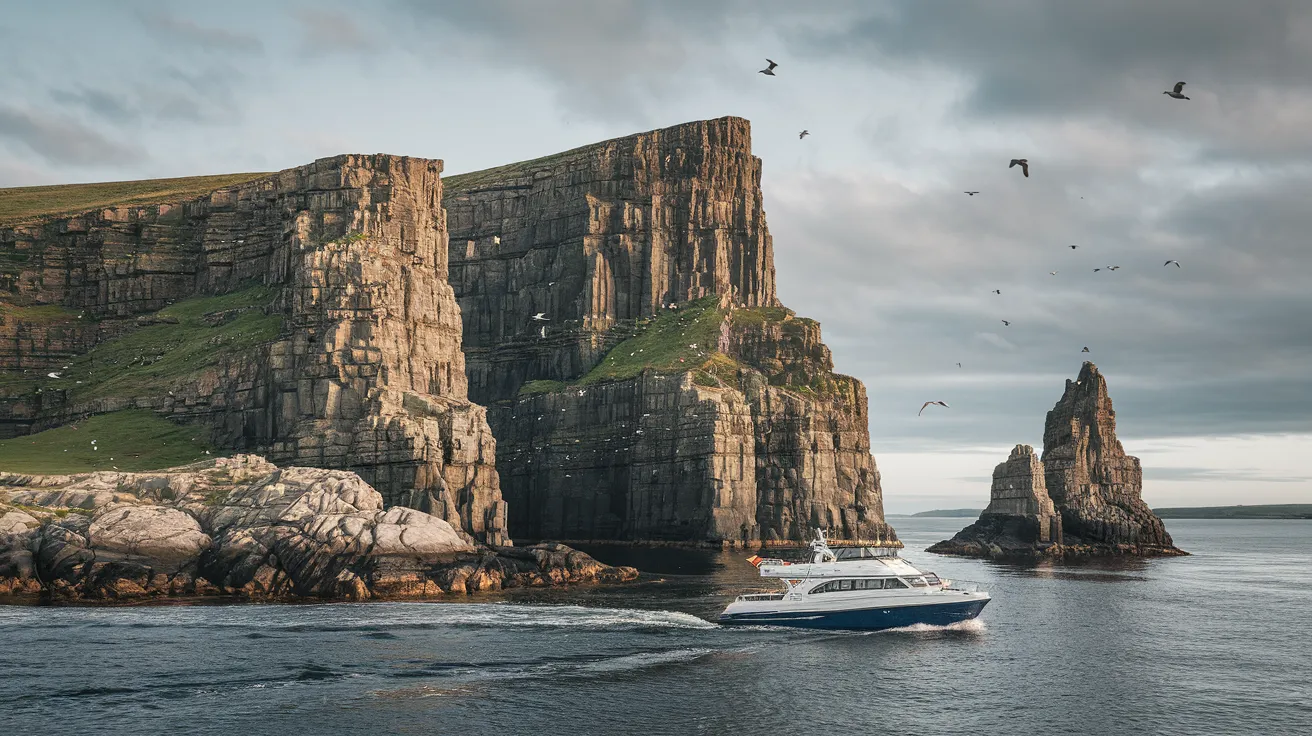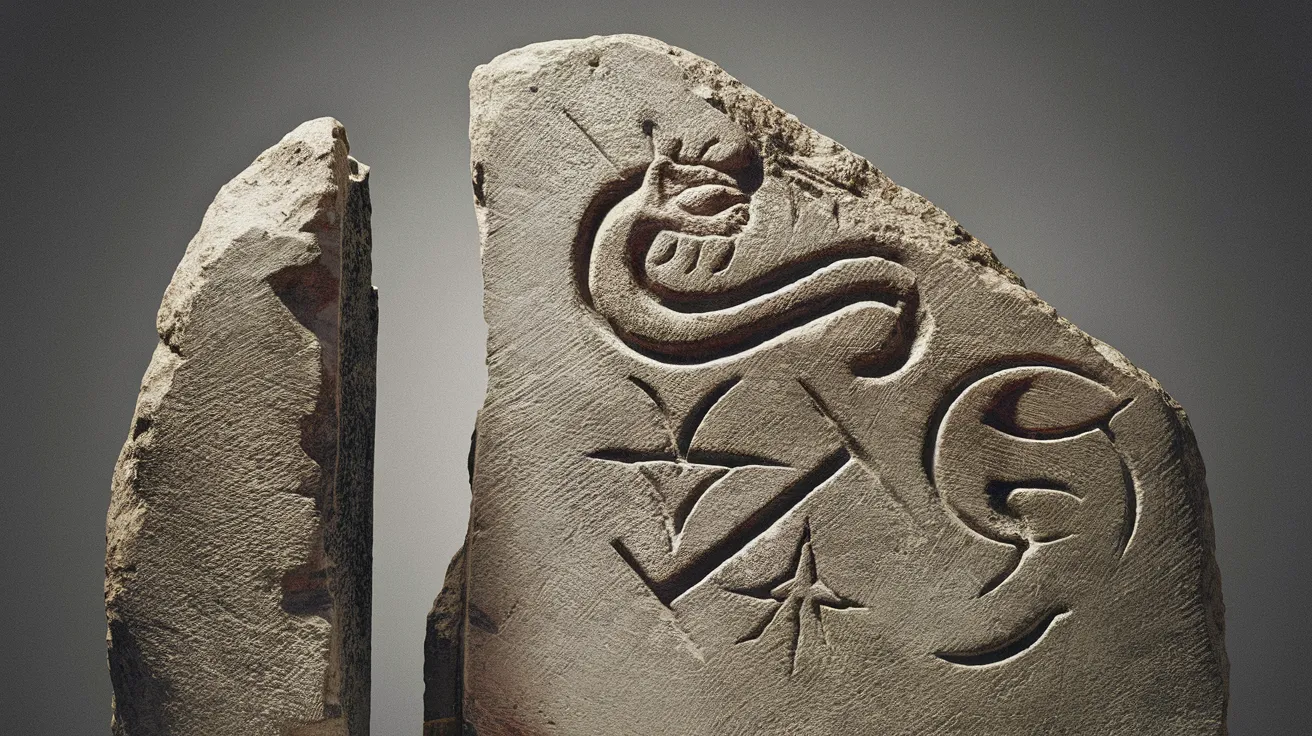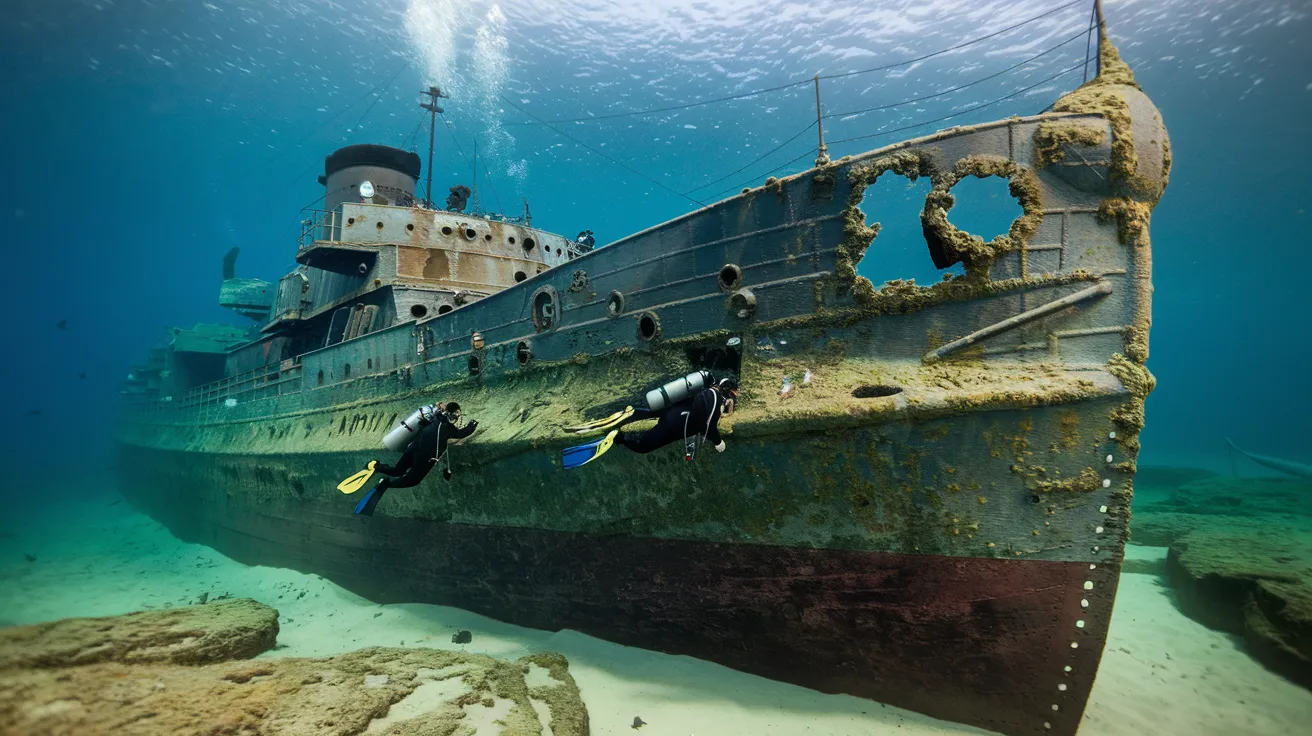Quick Navigation
- Scapa Flow: A Wartime Naval Fortress
- The Churchill Barriers: Engineering Against the Odds
- The Italian Chapel: A Miracle of Faith and Art
- Coastal Defences: Guarding the Flow
- Museums and Memorials
- Visiting the Sites
- Frequently Asked Questions
- Can you still see the scuttled German ships?
- Why is the Italian Chapel so famous?
- Was Orkney bombed in WWII?
- Is the Scapa Flow Museum open?
Orkney's tranquil islands belie a turbulent 20th-century history, shaped by their strategic importance during two World Wars. The vast natural harbour of Scapa Flow became the UK's primary naval base, witnessing pivotal events from the dramatic scuttling of the German High Seas Fleet in WWI to the tragic sinking of HMS Royal Oak in WWII. This wartime legacy is etched into the landscape, from the monumental Churchill Barriers and poignant Italian Chapel to the scattered coastal defences that once guarded the Flow. Exploring these sites offers a powerful journey through Orkney's crucial role in modern military history.
Scapa Flow: A Wartime Naval Fortress
Chosen for its vast, sheltered anchorage, Scapa Flow served as the main base for the Royal Navy's Grand Fleet in WWI and the Home Fleet in WWII. Its strategic location controlled access to the North Atlantic, vital for blockading Germany and protecting Arctic convoys.
WWI & The German Fleet Scuttling: Initially poorly defended, Scapa Flow was rapidly fortified during WWI. After the war, 74 ships of the defeated German High Seas Fleet were interned here. On 21 June 1919, under secret orders from Rear Admiral Ludwig von Reuter to prevent them falling into British hands, the crews scuttled 52 warships. This dramatic act, the largest single loss of naval vessels in history, left a ghostly underwater fleet, parts of which are still visible or accessible to divers today.
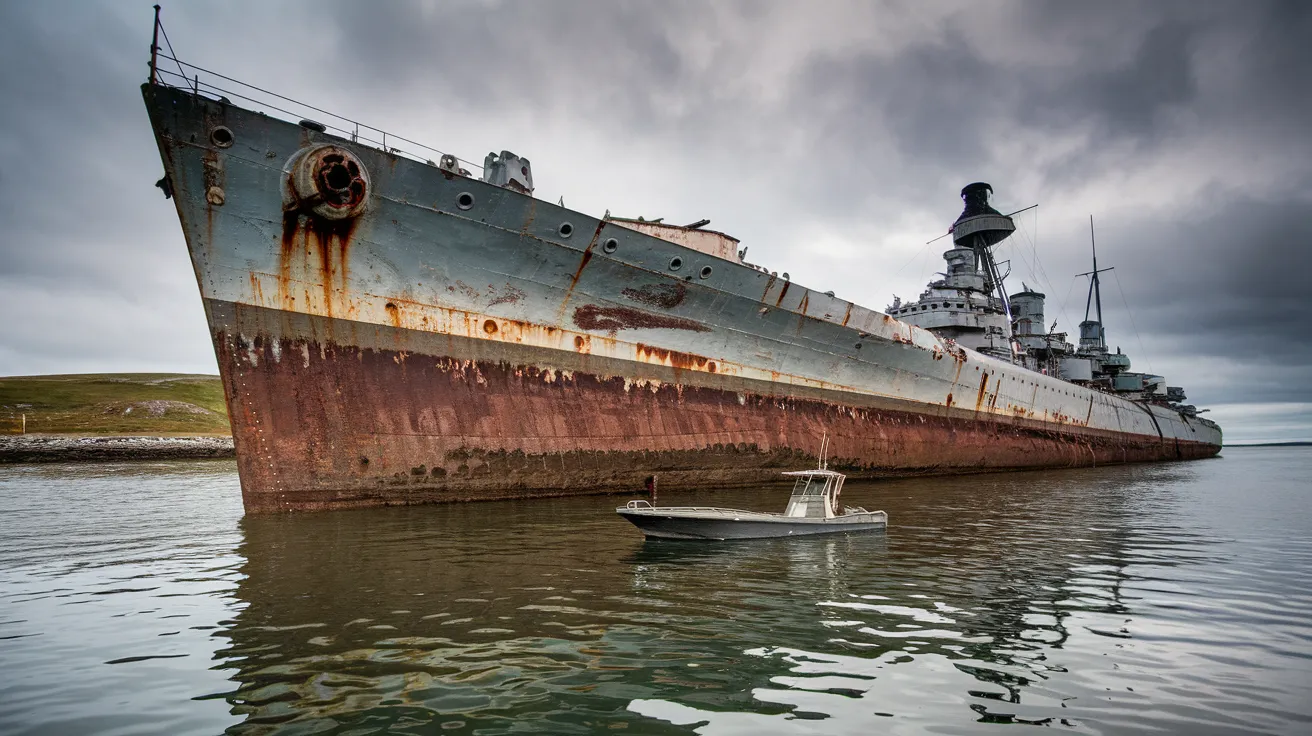
WWII & HMS Royal Oak: The perceived impregnability of Scapa Flow was shattered early in WWII. On 14 October 1939, German U-boat U-47, commanded by Günther Prien, slipped through the eastern defences and torpedoed the battleship HMS Royal Oak at anchor, with the loss of 833 lives. This devastating attack prompted Winston Churchill to order the construction of permanent barriers to seal the eastern approaches.
The Churchill Barriers: Engineering Against the Odds
In direct response to the Royal Oak disaster, construction began in 1940 on four massive causeways – the Churchill Barriers – to block the eastern channels into Scapa Flow. This immense feat of engineering involved:
- Laying 66,000 huge concrete blocks (5 and 10 tonnes each) onto rubble foundations.
- Using over 250,000 tonnes of rock quarried locally and filling wire 'gabion' baskets.
- Employing around 2,000 workers, including, controversially, over 1,200 Italian Prisoners of War captured in North Africa.
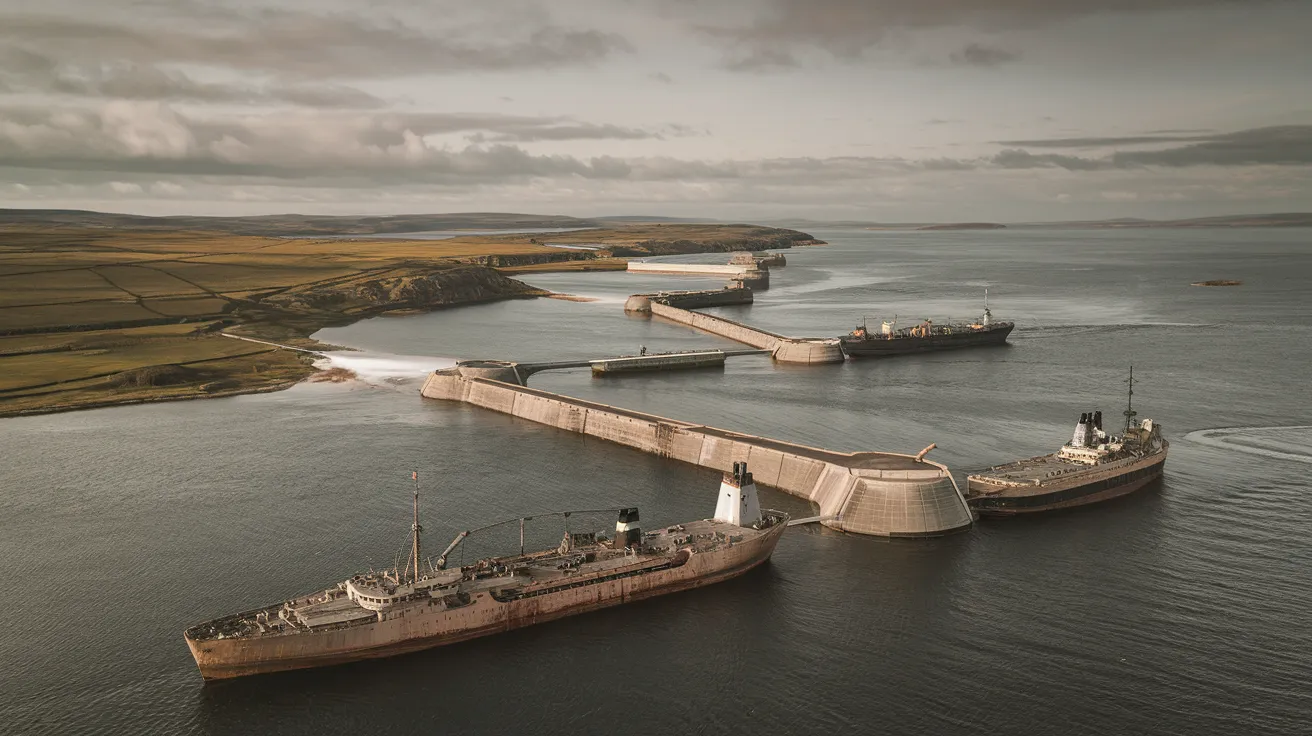
The POWs, housed in camps on Lamb Holm (Camp 60) and Burray (Camp 34), initially protested working on military defences under the Geneva Convention but later agreed under revised terms. Completed in 1944 and officially opened in May 1945, the Barriers permanently linked the islands of Mainland, Lamb Holm, Glimps Holm, Burray, and South Ronaldsay, transforming inter-island transport while serving as enduring monuments to wartime necessity.
The Italian Chapel: A Miracle of Faith and Art
One of the most moving legacies of the Churchill Barriers project is the Italian Chapel on Lamb Holm. Built by POWs from Camp 60 between 1943 and 1944, it stands as a testament to human spirit and creativity in adversity. Using two Nissen huts joined together, scrap materials, and concrete, the prisoners, led by artist Domenico Chiocchetti, transformed the basic structure into a beautiful place of worship.
Chiocchetti painted the stunning interior frescoes, including the intricate altarpiece depicting the Madonna and Child (based on a painting by Nicolo Barabino, carried by Chiocchetti as a prayer card). Other prisoners crafted the concrete facade, wrought iron rood screen, and holy water stoup. Saved from demolition after the war by local Orcadians, the Chapel was restored in the 1960s (with Chiocchetti returning to assist) and remains a cherished symbol of peace, reconciliation, and faith. It attracts visitors from around the world.
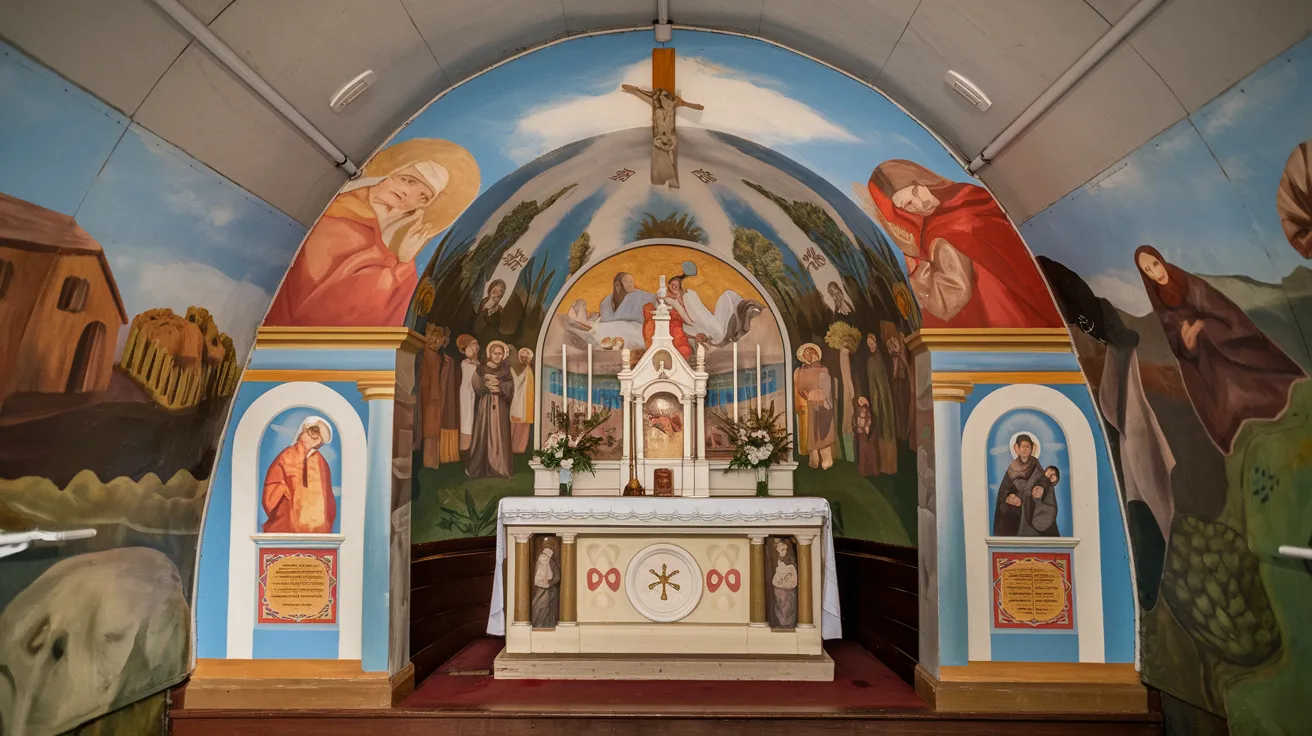
Coastal Defences: Guarding the Flow
Beyond the Barriers, an extensive network of coastal batteries and lookout posts guarded Scapa Flow:
- Ness Battery: Located west of Stromness, this well-preserved site features gun emplacements, searchlight positions, and accommodation huts, offering insights into the daily life of coastal gunners. Guided tours are often available.
- Hoxa Head: On South Ronaldsay, overlooking the southern entrance to Scapa Flow (Hoxa Sound), this battery retains its twin 6-inch gun emplacements and command post, considered one of the best-preserved WWII batteries in the UK.
- Other Sites: Remnants of gun emplacements, lookout towers, and anti-aircraft batteries can be found across Orkney, particularly on Hoy (e.g., at Lyness and Rinnigill), Flotta, and around Kirkwall and Stromness, hinting at the scale of the wartime fortification.
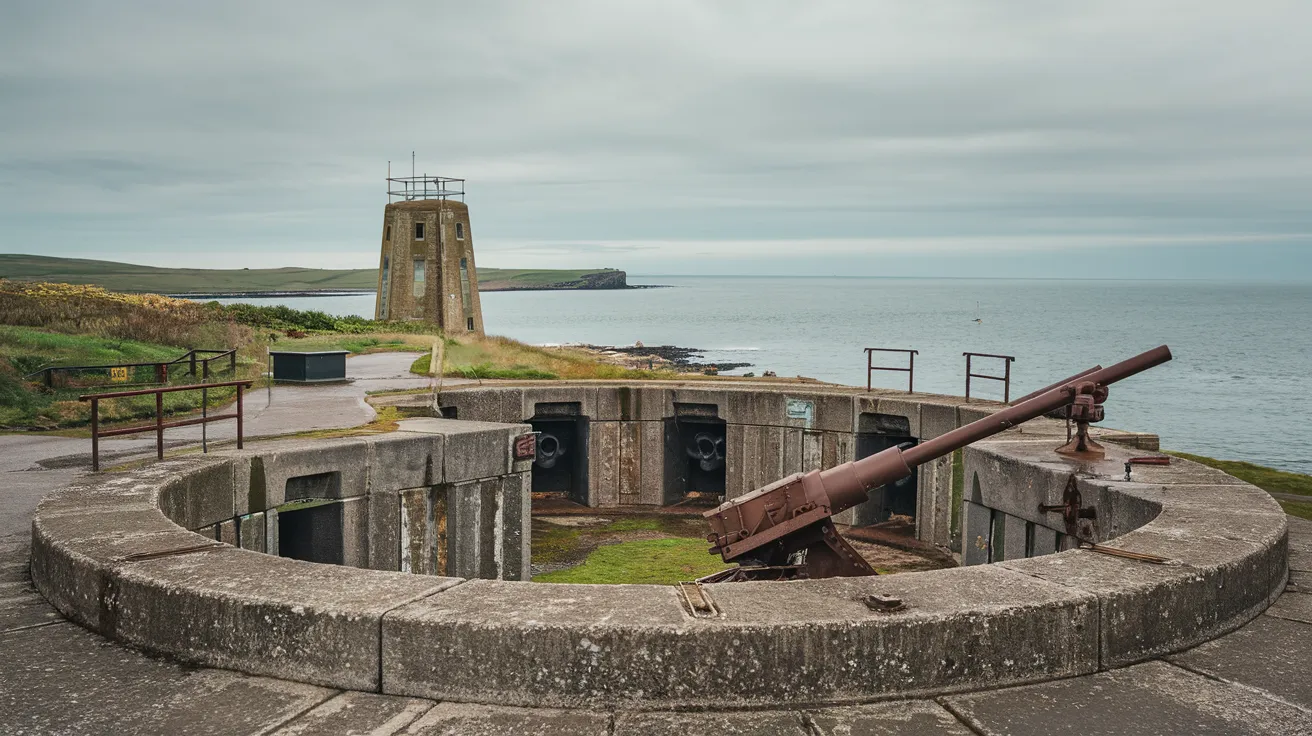
Museums and Memorials
Several sites help interpret Orkney's wartime story:
- Scapa Flow Museum: Located at Lyness on Hoy (accessible by ferry from Houton), this major museum underwent significant refurbishment and reopened in 2022. It tells the comprehensive story of Scapa Flow in both World Wars, featuring artifacts, photographs, and interactive displays. (Visit Website)
- Orkney Museum (Kirkwall): Includes exhibits related to WWII, the Churchill Barriers, and displays the salvaged bell from HMS Royal Oak.
- Kitchener Memorial (Marwick Head): A prominent clifftop tower commemorating the loss of Lord Kitchener and hundreds of men when HMS Hampshire struck a mine off Orkney in WWI (June 1916).
- Fossil & Heritage Centre (Burray): Features models and information specifically about the construction of the Churchill Barriers.
To find relevant videos, search YouTube for "Orkney Italian Chapel history" or "Scapa Flow WWII".
Visiting the Sites
- Driving: The Churchill Barriers (A961) provide easy road access to Lamb Holm (Italian Chapel), Burray, and South Ronaldsay (Hoxa Head) from the Orkney Mainland.
- Ferries: Orkney Ferries operate services to Hoy (Lyness for Scapa Flow Museum) from Houton, and to other islands with wartime sites.
- Tours: Several local guides offer specialized military history tours covering Scapa Flow, the Barriers, and coastal defences.
- Accessibility: The Italian Chapel is accessible. Coastal battery sites often involve uneven paths. Check accessibility details with museums directly.
Frequently Asked Questions
Can you still see the scuttled German ships?
Some wrecks are visible at low tide or from boat tours, particularly around the Churchill Barriers. Many are popular dive sites.
Why is the Italian Chapel so famous?
It's renowned for the incredible artistry created by POWs using basic materials in difficult circumstances, and as a powerful symbol of peace and human resilience.
Was Orkney bombed in WWII?
Yes, Scapa Flow and surrounding areas were targeted by Luftwaffe raids, particularly in early 1940, leading to damage and casualties.
Is the Scapa Flow Museum open?
It reopened in 2022 after major refurbishment. Always check their official website for current opening times and booking information before visiting.
Orkney's military history is a poignant and significant layer of the islands' identity. Visiting these sites offers a tangible connection to the global conflicts that shaped the 20th century and left an indelible mark on this unique archipelago. Consider basing yourself in Kirkwall accommodation or St Margaret's Hope accommodation for convenient access to many of these historic locations.

